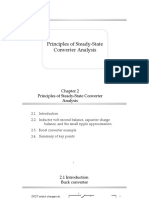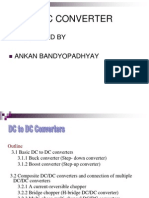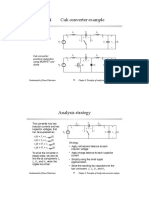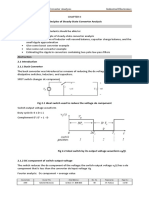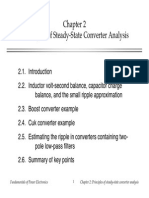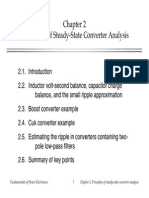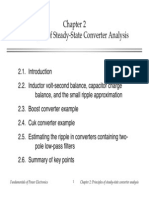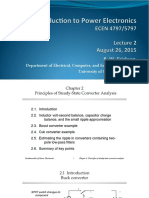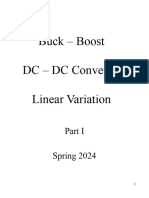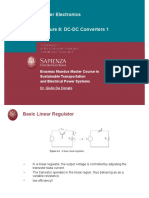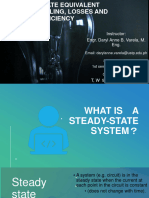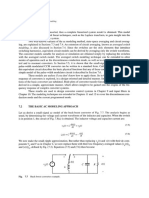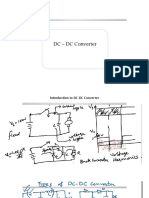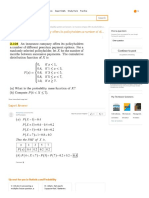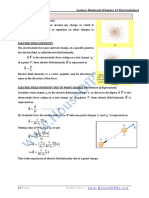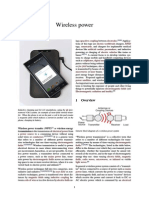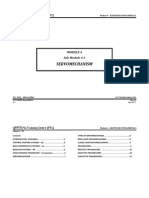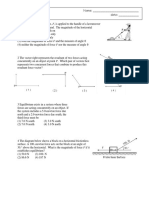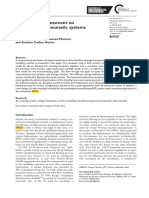0% found this document useful (0 votes)
197 views32 pagesSteady-State Converter Basics
This document discusses principles of steady-state converter analysis. It introduces inductor volt-second balance, capacitor charge balance, and the small ripple approximation. These techniques allow determining the output voltage of a converter circuit by ignoring small ripples in inductor currents and capacitor voltages. Examples of buck, boost, and buck-boost converters are provided to illustrate application of these principles.
Uploaded by
Jaleel AhmedCopyright
© © All Rights Reserved
We take content rights seriously. If you suspect this is your content, claim it here.
Available Formats
Download as PPTX, PDF, TXT or read online on Scribd
0% found this document useful (0 votes)
197 views32 pagesSteady-State Converter Basics
This document discusses principles of steady-state converter analysis. It introduces inductor volt-second balance, capacitor charge balance, and the small ripple approximation. These techniques allow determining the output voltage of a converter circuit by ignoring small ripples in inductor currents and capacitor voltages. Examples of buck, boost, and buck-boost converters are provided to illustrate application of these principles.
Uploaded by
Jaleel AhmedCopyright
© © All Rights Reserved
We take content rights seriously. If you suspect this is your content, claim it here.
Available Formats
Download as PPTX, PDF, TXT or read online on Scribd
/ 32
